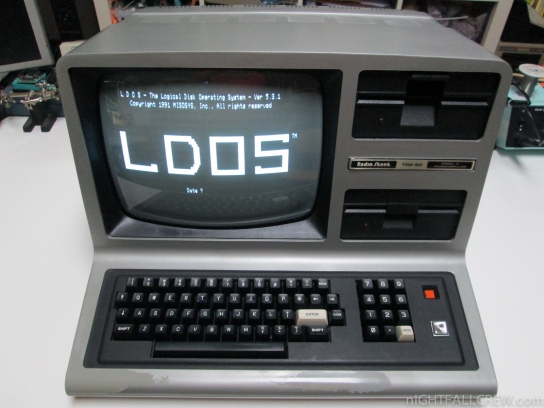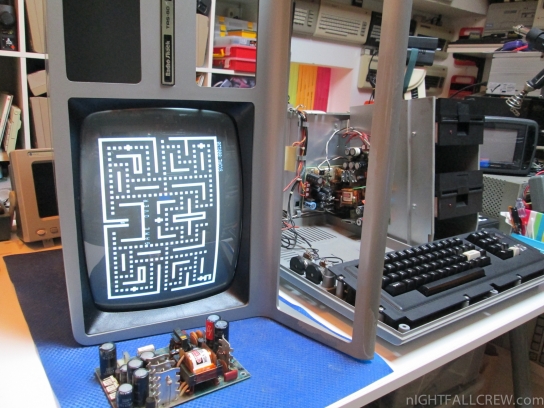
Autopsy:
TRS-80 (“Tandy/Radio Shack, Z-80 microprocessor”) was a brand associated with several desktop microcomputer lines sold by Tandy Corporation through their Radio Shack stores.
The original “TRS-80 Micro Computer System” launched in 1977 (later known as the Model I) was one of the earliest mass-produced personal computers. The first units, ordered unseen, were delivered in November 1977, and rolled out to the stores the third week of December. The line won popularity with hobbyists, home users, and small-businesses. Tandy Corporation’s leading position in what Byte Magazine called the “1977 Trinity” (Apple, Commodore and Tandy) had much to do with Tandy’s retailing the computer through more than 3,000 of its Radio Shack storefronts. Notable features of the original TRS-80 included its full-stroke QWERTY keyboard, small size, its floating point BASIC programming language, an included monitor, and a starting price of US$600 (equivalent to US$2,230 in 2011). The pre-release price was US$500 and a US$50 deposit was required, with a money back guarantee at time of delivery.
In July 1980 Tandy released the Model III. The improvements of the Model III over the Model I included built-in lower case, a better keyboard, 1500-baud cassette interface, and a faster (2.03 MHz) Z-80 processor.
With the introduction of the Model III, Model I production was discontinued as it did not comply with new FCC regulations as of January 1, 1981 regarding electromagnetic interference. The Model I radiated so much interference that while playing games an AM radio placed next to the computer could be used to provide sounds.
The Model III could run about 80% of Model I software, but used an incompatible disk format. Customers and developers complained of bugs in its BASIC and the TRSDOS operating system. The computer also came with the option of integrated disk drives.
Download:
Video of some games with sounds:
source: wikipedia


























Recent Comments